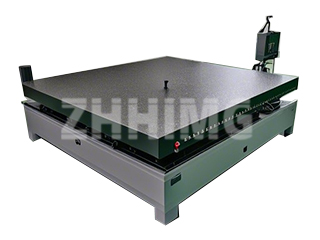Granite precision platforms are widely used in industries that demand high precision and stability, such as metrology and manufacturing. Given their essential role in maintaining dimensional accuracy, one key question often arises: how hygroscopic is granite, and can it deform in a humid environment? Understanding the hygroscopic properties of granite is crucial for ensuring that these platforms maintain their stability and performance in diverse operating conditions.
Granite, as a natural stone, is composed of various minerals, including quartz, feldspar, and mica. Unlike materials such as wood or certain metals, granite has very low hygroscopicity. This means it does not absorb significant amounts of moisture from the surrounding environment, even in humid conditions. The molecular structure of granite, primarily composed of highly stable mineral grains, makes it resistant to the swelling or warping that moisture absorption causes in other materials.
The absence of significant moisture absorption is one of the reasons why granite is a preferred material for precision platforms. In contrast to other materials that may expand or contract due to humidity changes, granite’s low hygroscopicity ensures that it remains dimensionally stable even in environments with fluctuating moisture levels. This characteristic is especially important for applications requiring high accuracy, where even minor dimensional changes could lead to errors in measurements.
While granite does not absorb moisture to a noticeable extent, extreme humidity can still affect its surface. If exposed to high moisture levels for prolonged periods, the surface of the granite may accumulate some surface moisture, but this is generally not enough to cause deformation or loss of precision. In fact, when properly treated and sealed, granite platforms are highly resistant to environmental factors such as moisture, temperature variations, and chemical exposure.
It is important to note, however, that proper maintenance is essential to keep granite platforms in optimal condition. While granite’s inherent resistance to moisture absorption is a major advantage, it is still advisable to keep these platforms in environments where humidity is controlled. In areas of very high humidity, ensuring that the platform is kept in a climate-controlled room with consistent temperature and humidity levels will prevent any external factors from influencing its performance.
In conclusion, granite precision platforms are not hygroscopic in the traditional sense, and their ability to withstand high humidity without deforming makes them ideal for precision applications. Their low moisture absorption ensures that they maintain their dimensional accuracy and stability, even in humid environments. However, to ensure long-term performance, it’s still recommended to store and operate these platforms in environments where temperature and humidity are controlled. By understanding the properties of granite and taking appropriate precautions, industries can fully leverage the material’s strength and stability for high-precision tasks.
Post time: Oct-20-2025

